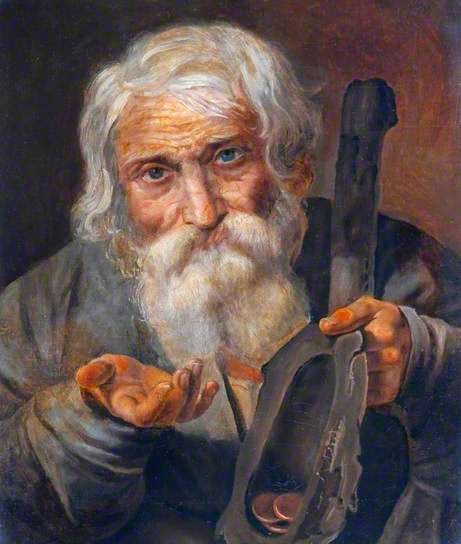1. List the problems with this story.
1)Billy sets the Jack O’ Diamonds appearing with Bonny, a puppy, but he does not give the puppy a outcome.
2)Some characters’ appearing is funny and ridiculous, like Marty’s, Zachariah’s, the rabbit's and so on. (It’s funny that Marty just stay to observe and take notes; Zachariah carries a rabbit as well. )
3)Almost all dead die rapidly even meaninglessly for the theme of—peace, like the Vietcong guy, Kaya, “the black chick,” Zachariah, and Jack.
4)The whole scene is full of gunfire and confusion. Billy tries resorting to violence to gain peace, which is disapproved of the audience.
2. Explain how you would fix these problems.
1)Make the puppy is a key role to twist the plot in the end.
2)Make every character’s appearing reasonable but keep some elements like rabbit and graves.
3)No one will die but some wounded. It will be a real peace.
4)Add some strategy and tactics in scene. Delete most gunplay actions. The ending will be “peace for peace."
3. Fix the problems (you can do this in any form you like: a script, a story, a poem, a video that you show the class.)
Exterior.
Cemetery. Night.
Jack O’ Diamonds sets everything. He arranges his friends, the seven psychopaths (including "the black chick", Zachariah, hans, Marty, Vietcong guy and some others unknown.) hiding in graves. But he carries his lovely puppy, Bonny, hiding behind a headstone (He says he cannot bear to cage Bonny in a grave. He thinks it is more reassuring to keep Bonny with him.) waiting for the Mafia boss. Once the boss shows up, he will whistle to call his friends out.
After a while, the Mafia boss is coming. To his surprise, the boss shows up alone and unarmed. So he changes his mind and does not whistle. He set his back against the headstone, and asks the boss behind him,
“Why are you alone?”
“Can not it?”
“Well, let’s go one on one. No arms. Have guts?”
“That’s what I am looking!”
Then, Jack sets Bonny stay behind the headstone. And he stands up, walks towards the boss, and disarms in front to the boss. After staring at each other for a while, they begin to fight with bare hands. Seven psychopaths are watching the one-on-one fight through grave’s crevices invariably. The boss is agile. He knows martial arts. However, Jack is suck in Kungfu. There are great disparity between them.
Seven psychopaths get a bit of anxiety. Marty believes Jack will lose, even die under the Mafia boss’ hand. So, he gets out of the grave silently and calls everybody out. He asks “the black chick" and Hans staying, and requests Zachariah and the Vietcong guy to go with him to break into the Mafia den, somewhere in the forests. Zachariah is not willing to go because he wants to be with “the black chick.” So he asks Marty,
“Why me?”
Marty answers, “I know you have a rabbit. “
“So what?”
“So you are good at hooking up with rabbits, right?” Marty keeps saying, “The Mafia boss has also a rabbit, too. We need to abduct it.”
“What?” Zachariah is surprised.
“Come on. Just go!”
The three friends arrive at the Mafia den. Zachariah hooks up the rabbit successfully. However, they are discovered as they are leaving. Fortunately, the Vietcong guy beats back the attack of the Mafia gangsters.
They carry the “hostage” back to cemetery but to see Jack twisting on the ground, bleeding all over the face. Jack still does not whistle. These friends cannot stand anymore. Marty shouts at the boss,
“Hey, you, look over here!”
The Mafia boss is shocked when he sees his sweetie rabbit bound. He scolds, “What the fuck you doing? Do not hurt my Penny!”
“It depends on you. If you let him (Jack) go, I’ll let your little Penny go.”
“You are double-hcanted. You said one-on-one, and you cheated on me.” The boss sputters, looking at the lying Jack.
Marty irritates the boss further, “Um, I take it that you don’t agree.” Marty targets the gun on the rabbit.
The boss grits his teeth, “You’ve forced my hand.” Then he snaps his fingers.
Suddenly, a plenty of Mafia gangsters show up from the forest.
“Now, can you let Penny go? Or you guys no one will leave alive,” the boss laughs badly to them.
On seeing this, Jack O’ Diamonds says with pointing at those gangsters, “Thus, I’m afraid that even if we release your Penny, they won’t gone.” With that he whistles.
A tough fight is launched.
The shoot-out.
In the tangled warfare, the rabbit Penny gets injured. It falls unconscious on the floor beside the headstone which right the one that the puppy Bonny hides behind.
Bonny discovers Penny.
Bonny comes to Penny.
And Bonny licks Penny’s wounds, over and over again.
The Mafia inadvertently sees the friendly and peaceful scene. He goes numb, stands there, stares at the two lovely friends. Then everyone stops and turns to look. They all cannot help being moved.
Unknowingly, they all lay down the arms.







